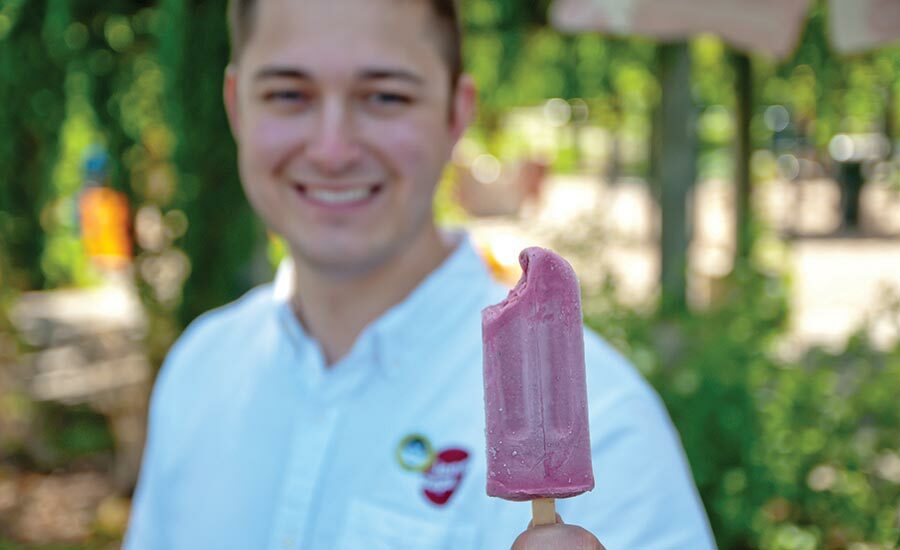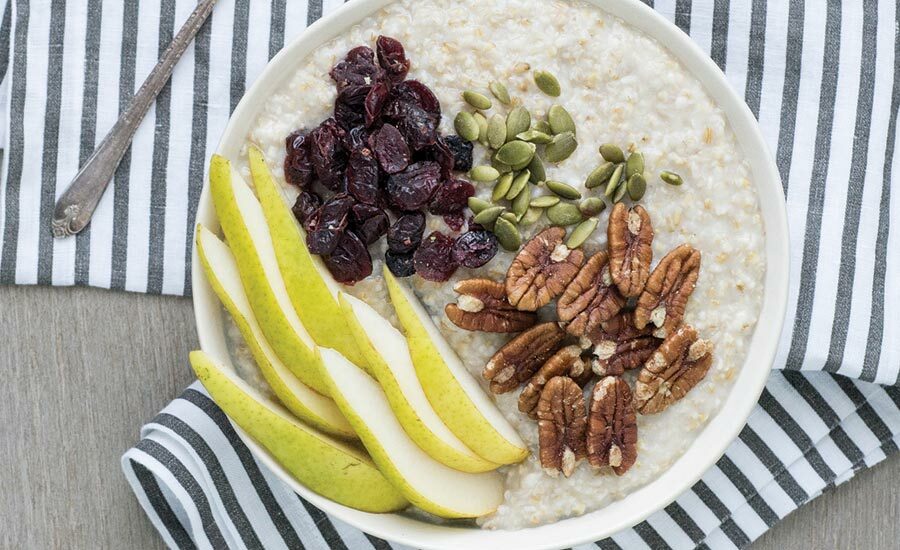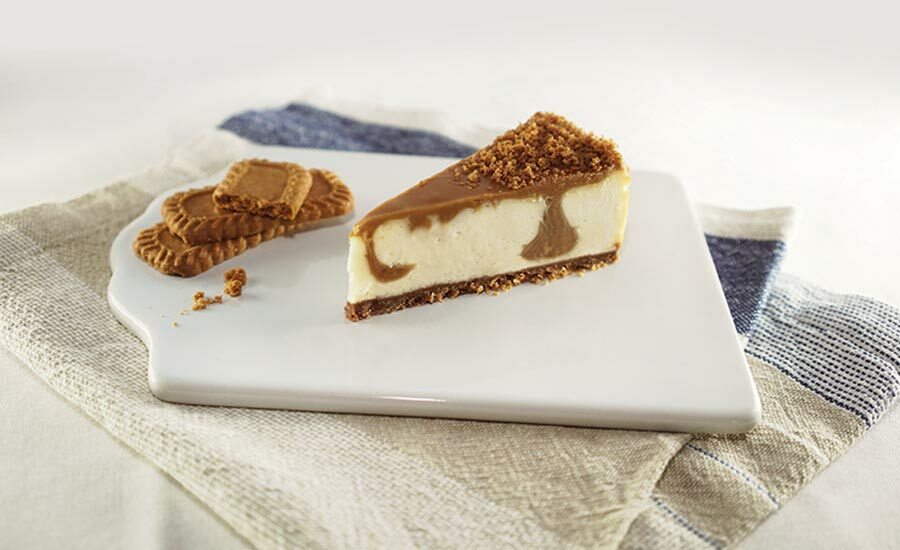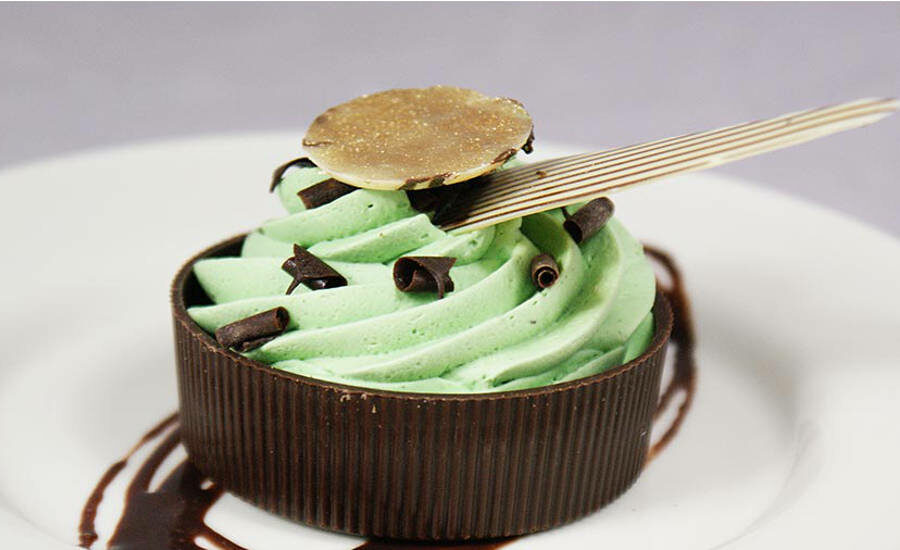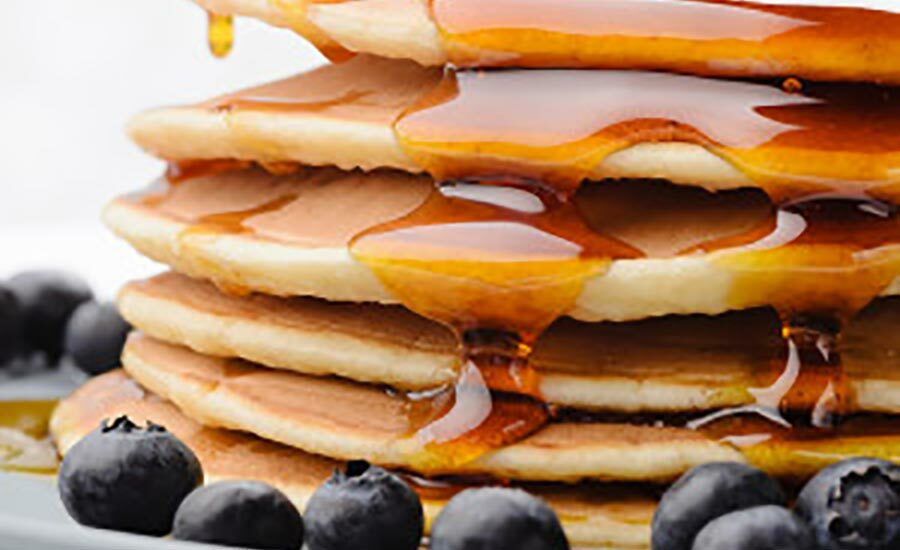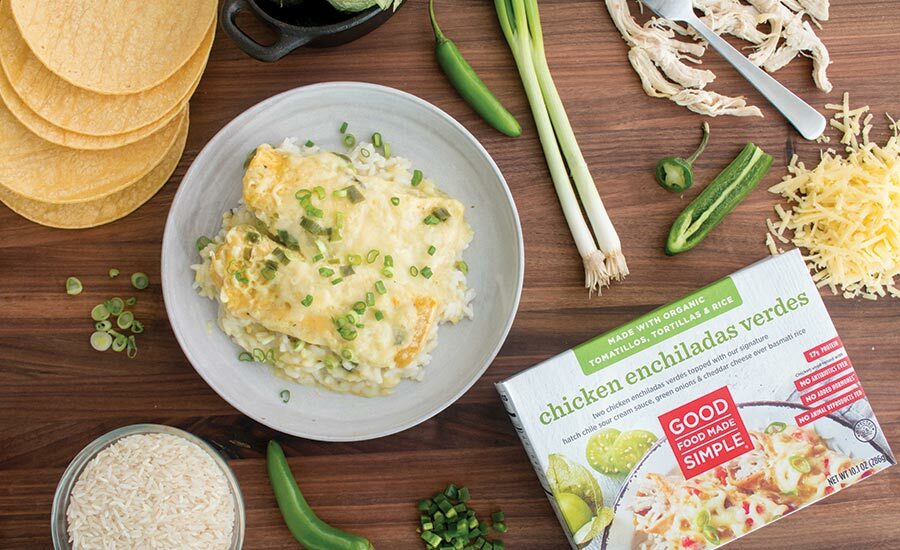Consumers reaching for comfort foods typically want to enjoy them immediately, yet so many foods defined as “comforting” are long and laborious in the making. Freezing raises the accessibility of comfort foods and creates the convenience that consumers seek.
Frozen foods have the advantage of increased shelflife and retention of flavor, plus today’s technology and ingredient solutions mean these products can also retain those freshly prepared characteristics that comfort food connoisseurs crave.
The generally creamy, cheesy, and smooth textural attributes of comfort foods can change significantly depending on how the product is frozen, the speed of freezing (which affects the size of the ice crystals formed), and the type of food matrix being frozen.
During freezing, moisture in the food forms ice crystals which expand and cause the food matrix to rupture. During thawing, this moisture separates from the food matrix, causing drip loss and deteriorating overall food quality by negatively impacting the “comforting” texture of the frozen food.
The structural integrity of frozen foods—and therefore their eating quality—can be protected by understanding the physicochemical and thermo-mechanical properties of the food system and identifying the appropriate cryoprotectant functionalities to preëmpt or mask the mode of failure.
Cold Protection
In our increasingly anxious world, the creamy textures of ice cream and frozen desserts are popularly comforting. Sociologists and psychologists have amply demonstrated the mood-tempering effects people derive from eating familiar, nostalgic, simple, or indulgent foods.
Often, calorie counts or similar concerns are less important for consumers seeking out such items. But flavors and textures are more paramount for these treats than for most other foods.
For example, the mood-boosting appeal of ice cream is partly due to its creaminess, a quality that is difficult to achieve in non-dairy or other low-calorie versions.
Hydrocolloids such as locust bean gum and carrageenan can act as cryoprotectants and help deter harsh ice-crystal formation to produce smooth non-dairy frozen desserts that rely on almond, coconut, soy, or other non-dairy milk analogs instead of dairy fat and dairy protein for volume and texture.
Developing and maintaining structure within frozen dairy desserts is a challenge for the ice cream industry due to complexity of the colloidal system. Consumer demand for healthier, natural, low-additive, minimally processed frozen desserts has driven the evaluation of novel processing methods and alternative natural and functional ingredients.
Ben & Jerry’s Homemade Holdings Inc., now owned by Unilever plc, uses soy lecithin, coconut oil, and pea protein in some of its products to provide clean-label emulsification and stabilization that is typically provided by eggs and cream in traditional ice cream.
Cryoprotectants help produce—and maintain—a smooth texture during frozen storage. Three mechanisms come into play: First, these ingredients raise the viscosity of the base mix, which is correlated to the control of ice-crystal growth. Second, they form cryogels as a result of temperature fluctuations during storage. Finally, they aggravate phase separation while slowing down re-crystallization.
Consumer demand for healthier, natural, low-additive, minimally processed frozen desserts has driven the evaluation of novel processing methods and alternative natural and functional ingredients.Health-promoting ingredients, such as dietary fiber, prebiotics, and low-glycemic sweeteners, also have been used successfully for cryoprotection and texturization in ice cream and frozen dessert formulations. They help provide customized texture and flavor perception by mimicking fat and sugar. Understanding biopolymer functionality at lipid–water–air interfaces has opened the door to using unsaturated fatty acids in ice cream structure development, which is particularly important for reformulation purposes.
Viscosity Solutions
Plant exudates such as gum arabic, gum ghatti, gum karaya, and gum tragacanth, used in small quantities, can enhance viscosity and deter ice crystal formation in frozen creamy fluid foods such as sauces and desserts.
These hydrocolloids stabilize emulsions by matching the densities of oil and aqueous phases and by increasing the viscosity of the aqueous phase to slightly surpass that of the oil phase, reducing the tendency of the dispersed phase to coalesce.
Plant seed gums such as locust bean gum and guar gum have been part of the frozen food ingredient tool chest for decades. But these paved the way for new seed gums, such as tamarind seed gum, basil seed gum, cress seed gum, and quince seed gum. All are FDA GRAS-certified clean-label alternatives to modified starches and emulsifiers for use as cryoprotectants in frozen food systems.
These new seed gums help improve mouthfeel, regulate ice crystal size, and maintain stability and shape retention in frozen desserts. Typically deployed in concentrations of just 0.1 to 0.5% (w/w), they can enhance physical, textural, and rheological properties of low-fat whipped cream made with just one-third of the fat of traditional whipped cream.
Seed gums are ideal for lower fat and lower calorie frozen comfort foods in foodservice, where repeated freeze/thaw stress is not as much the issue as is replicating the thixotropic rheology of full-fat and higher calorie consumer favorites. They also, in this manner, help foodservice operators comply with FDA’s mandate to provide calorie information on restaurant menus, menu boards, and vending machines.
Guar, tamarind, and locust bean gums are used by soft-serve frozen yogurt outlets Yasso Inc. and MTY Food Group Inc./Kahala Brands’ Pinkberry.
The gums allow for lower fat/lower calorie soft-serve-like frozen yogurt products that do not become gummy or viscous, but instead are thin upon shear to become easily pumpable, then set shape quickly—and retain it—once poured or molded, as well as during eating.
Starch Barrier
Non-conventional starches from fruits and vegetables have progressively been gaining importance due to their diverse physicochemical, structural, and functional characteristics.
These native starches, derived from sources such as plantains and legumes, are used in fully or partially cooked frozen foods containing sauces, gravies, pie fillings, or desserts. They protect the formulations from undergoing undesirable changes after the freezing process that might reduce consumer acceptability.
Ice crystals disrupt the cell or cell components of plant tissues. Cell wall breakage leads to separation of moisture from the cellular matrix, and turgor loss. Consequently, frozen fruits and vegetables become soggy upon thawing. In frozen fruit pies and cobblers, water from the fresh or individual quick frozen (IQF) fruit affects the crust and filling during freezing and thawing.
Starch, by virtue of its unique combination of properties—solubility, swelling, pasting, gelation, gelatinization, and retrogradation (recrystallization)—can thicken, colloidally stabilize, gel, bulk, retain water, and help manage water in fruit fillings.
Depending on their source, pH, and the other ingredients of the filling formulation, starches can effectively disperse and quickly hydrate during mixing. In this way, they improve freeze/thaw stability and enhance the filling texture substantially after baking.
Frozen “hot” sandwiches (including calzones and other filled “pockets”) are one simple type of comfort food that presents a challenge in bridging the fresh vs. convenience dichotomy. Some become chewy or tough when microwaved, unless they are high in fat.
However, utilizing the right starches in the filling can preferentially hold the moisture to prevent migration during microwaving to the bread/crust. In the outer bread/pie crust, starches can act as a plasticizer to eliminate microwave-associated toughening.
The interaction of the hydrophilic and hydrophobic properties of the starch depends on filling and crust formulations. This has prompted the development of proprietary commercial pre-mixes customized to reduce moisture migration, reduce shortening in frozen pie crust and frozen fried dough products by as much as 50%, and to deliver crisp “fresh-baked” taste in microwavable frozen baked goods, along with cost savings from the replacement of dairy products and egg ingredients.
Cryoprotection does not have to make the ingredients list sound like a chemical abstracts index. Good Food Made Simple Co. CEO George Gavris collaborated with a professional chef to make organic frozen comfort foods designed to deliver a clean label as well as taste and comfort. The team uses ingredients such as xanthan gum and corn starch to help deliver full flavor and texture experiences in its Hatch Chile Mac and Cavatappi Bolognese.
To help fulfill this goal in its Breakfast Burritos and Café Wraps, Good Food Made Simple relies on a mixture of cellulose gum, guar gum, and non-GMO corn starch for the tortilla, and a combination of potato starch and non-GMO corn starch in the cheese and cheese sauce.
Based on a misinformation campaign, carrageenan—a natural polysaccharide derived from seaweed—has suffered a consumer backlash. This compelled Nestlé SA to remove the ingredient from its Stouffer’s brand Meat and Sauce Lasagna—the frozen-entrée maker’s most popular product. The stated goal was to replace it with “kitchen cupboard” ingredients. The company chose modified corn starch.
Hydration Equation
Syneresis, or “weeping,” is a common phenomenon observed in prepared foods from dairy to frozen fruits and vegetables. In the latter, it happens immediately during thawing. Syneresis inhibition is easily the most valued cryoprotectant property sought in frozen foods.
Hydrocolloids help inhibit syneresis because they are polyelectrolytes. This means they have several charged groups in their molecular structure that ensure strong hydration.
Recent innovations focus on delivering frozen foods as a “better-for-you” restaurant experience at home. For example, Pinnacle Foods Inc. created its Veggie Made line of side dishes from vegetables such as cauliflower for a convenient and tasty low-carbohydrate alternative to traditional rice dishes.
Cauliflower also is the foundation ingredient of several new frozen comfort foods under B&G Foods Inc.’s Green Giant brand. The line’s Veggie Tots use cauliflower and broccoli as kid-friendly, parent-approved alternatives to deep-fried potato tots and French fries. Meanwhile, its Riced Veggies, made entirely from vegetables, are positioned as alternatives to traditional rice, with 70% to 85% fewer calories per serving than prepared white rice.
Mashed Cauliflower is a recently trending alternative to mashed potatoes, but with 40-45% fewer calories than prepared mashed potatoes. However, such products typically are prone to weeping. Modified starches can help these formulations.
Starch modification provides numerous possibilities to improve product quality by decreasing retrogradation, gelling tendencies of pastes, and gel syneresis of native starches.
Physically modified starches impart better freeze-thaw and cold storage stabilities than their native counterparts. For example, rice starch masks the effects of freezing whipped cauliflower by enhancing its smooth, creamy texture and eliminating the need for additional fat as a plasticizer (required for mashed potatoes).
Mashed potatoes are an ideal material for freezing, as they can either be used as a ready-meal component or as a single product. But they still can use a little help to maintain texture and flavor.
A combination of kappa carrageenan and xanthan gum can help retain mashed potatoes’ water-holding capacity for as long as one year. The kappa carrageenan provides the appropriate thickening texture, while the xanthan gum imparts creaminess to the mashed frozen/thawed product, despite starch retrogradation.
Cauliflower also is the core ingredient of several frozen comfort foods made by Cali’flour Foods LLC. Its cauliflower-based pizza crust also includes almond flour, flax seed meal, and tapioca starch, so the crust does not become mushy or tough in the microwave.
Coating Tech
Tissue disruption due to freezing can be lessened by coating pre-cut pieces with hydrocolloids. This pre-conditioning works well with pre-cut frozen carrots.
Applying xanthan gum at 0.4% decreases the glass transition temperature (the temperature below which a polymer becomes hard and brittle, i.e. like glass) and reduces the textural losses and sponginess that can occur during freezing.
Meanwhile, coating pre-cut fruit, such as balled melon pieces, with pectin solution decreases damage to the fruit structure during freezing process. This helps maintain the sensory and textural quality during long-term frozen storage. And alginates help protect frozen strawberries from losing their turgor in frozen pie fillings.
Frozen curries using cut-up vegetables as the predominant component, and including a gravy, are highly prone to liquid separation and textural losses after thawing.
The addition of cryoprotectants not only aids water-holding capacity for these textural complexes but also improves viscoelastic properties of frozen/thawed vegetables. Carrots and potato pieces do not end up spongy, plus there is considerable reduction in drip loss.
Seaweed extracts such as carrageenan, agar, and alginate, as well as glucomannan from the Asian tuber konjac, are being added to wheat dough and products such as Chinese steamed bread and dumplings.Pies—especially fruit pies—are a near-sacrosanct comfort food for many. Kara Romanik founded Mamie’s Pies LLC, which makes a line of old-fashioned pies presented in single servings. The products retain their authentic texture and flavor, while leveraging the benefit of cryoprotection natural to some ingredients, such as fruits with intrinsic cellulose and pectin. Also, molasses mixed with brown sugar is used instead of white sugar for better water-retention properties.
The Modern Pod Co. encases creamy, savory hummus in a crispy multigrain shell. The whole is pre-baked, then flash-frozen into a portable, hand-held snack. Marketed as a “better-for-you” product, each serving is a good source of fiber (3g) and protein (6g).
Baked-in Goodness
Freezing and frozen storage efficiently slow down the staling of baked products, especially bread. During frozen storage, the gluten network in frozen bread is depolymerized, resulting in greatly reduced volume of the final bread.
Freezing of partially baked bread can produce sensory and textural qualities close to those of fresh bread in the final baked product. However, par-baked breads stored for an extended period of time tend to produce hard crumbs in the re-baked bread.
The addition of hydrocolloids can slow down this staling of the bread by decreasing the retrogradation enthalpy (total heat content) of the amylopectin after the full baking of partially baked frozen breads. Adding acacia gum to bread extends shelflife and consumer experience of texture. It increases water retention and preservation, and improves sensory evaluation as well.
Thickening, emulsifying, and stabilizing are probably the most sought-after cryoprotectant properties for formulation of baked goods. Tapioca starch is viscoelastic in nature when added to water-forming gels, which exhibit the characteristics of both a liquid and a solid.
Tapioca starch mixed with whey powder is the key to the successful dual texture of frozen pão de queijo—the rapidly uptrending Brazilian cheese rolls and cheese breads, such as those made by Forno di Minas USA Inc. and Brazi Bites LLC. Tapioca allows for the fluid and cheesy crumb and the crisp crust sections to retain their moisture and prevent the traditionally delicate and crumbly texture from becoming tough.
Seaweed extracts such as carrageenan, agar, and alginate, as well as glucomannan from the Asian tuber konjac, are being added to wheat dough and products such as Chinese steamed bread and dumplings. The distinctive thickening power of these ingredients, as well as their ability to interact with other stabilizers to preserve the original characteristics of frozen foods, makes them especially desirable.
Originally appeared in the June, 2017 issue of Prepared Foods as Cold Comfort.
In the Pipeline
The growing demand for products perceived as healthier and more “natural,” with minimal processing, has driven the quest for new ways to improve quality and storage stability of frozen foods. Ingredients such as dietary fiber, prebiotics, polysaccharides, and ice structuring proteins are being successfully tested as cryoprotective, texturizing, and structuring agents.
On the tech side, emerging minimal processing technologies—such as hydrostatic pressure processing, ultrasonic or high-pressure-assisted freezing, low-temperature extrusion, and enzymatically induced biopolymer crosslinking—have been evaluated for their ability to improve colloidal stability, texture and sensory quality of frozen desserts.
Low-temperature extrusion is a relatively new technique in ice cream processing, implemented using an extruder and high shear stress to reduce the size of ice crystals and air cells. Marketed as “slow-churned,” the ice cream is significantly creamier, more easily scoopable, and cohesive with a greater melt resistance without the need for expensive or undesirable ingredients or for conventional tunnel hardening.
